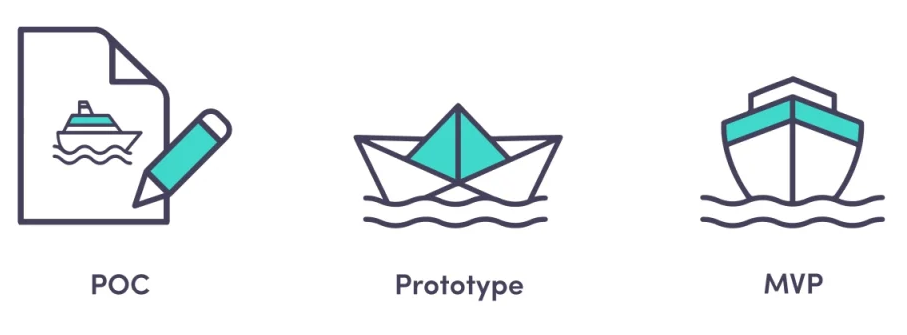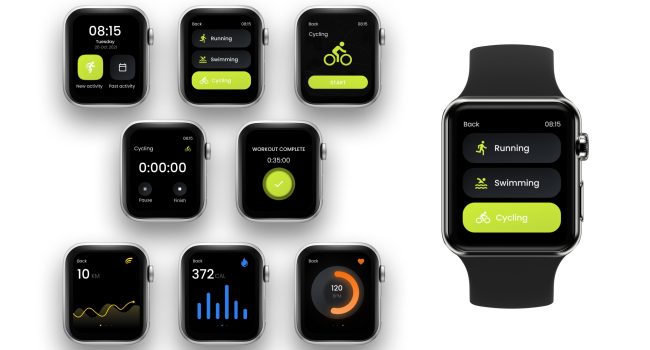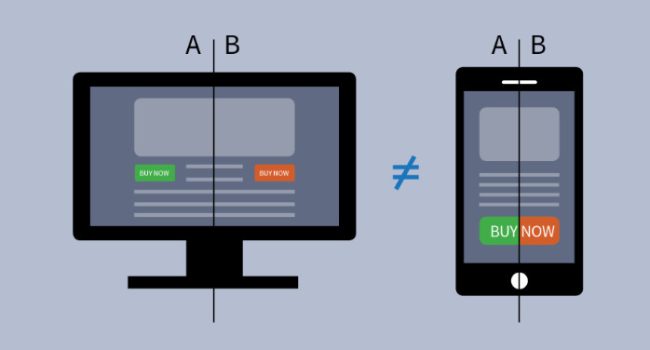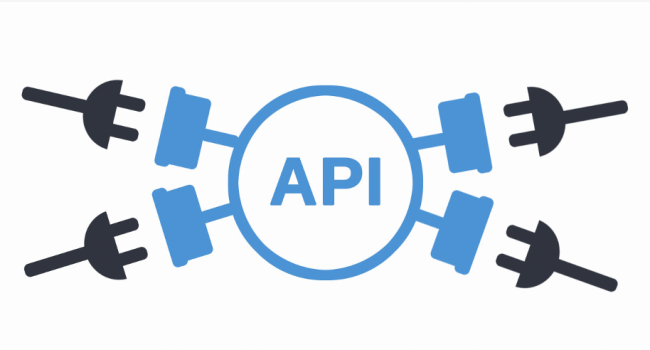You’re prepared to move forward with implementing your software idea now. Isn’t it time to create an MVP? Or, hold on, do you require a proof of concept? Perhaps the term “prototype” is more appropriate.
- What is a Proof of Concept (PoC)
- Key Characteristics of a Proof of Concept
- When to Use a Proof of Concept
- What is a Prototype
- Key Characteristics of a Prototype
- When to Use a Prototype
- What is a Minimum Viable Product (MVP)
- Key Characteristics of an MVP
- When to Use an MVP
- Choosing the Right Approach
- Proof of Concept, then Prototype, then MVP
- Progress Your Software Idea to the Next Stage with XR Studios
You’re not the only one who finds it difficult to determine which software step to employ. Proof of Concept, Prototype, and Minimum Viable Product (MVP), are terms that are frequently used interchangeably. In actuality, though, each phrase designates a different phase of the software development life cycle.
A proof of concept (PoC) is a straightforward internal feasibility test used to determine if an idea is worthwhile. A prototype verifies the notion further if a proof of concept shows potential. It’s a basic, barely working model of the software concept. The most advanced iteration of each of these three tools is called an MVP. The software version is minimal but functional and can be made available to beta testers. These early software models are all valuable in their own right, and creating a user-centric product can be effectively achieved by using the appropriate tool at the appropriate moment.
What is a Proof of Concept (PoC)
A proof of concept is a simple demonstration of the viability and potential worth of a software concept. It resembles a well-defined project more than it does a software product. It might, for instance, assess the feasibility of only one suggested app feature. To test more than one capability, you would want multiple proofs of ideas. Before devoting substantial resources to an idea, a proof of concept (PoC) can be used to confirm its technical or commercial viability.
Key Characteristics of a Proof of Concept
- Focused on the Essentials: A proof-of-concept focuses solely on the elements required to establish practicality. Right now, essential functionality—rather than user experience—is the main priority.
- Simple Format: A PoC is quite easy to use. Subsequent phases of development bring refinement. For a proof of concept, a rough document or demo is frequently sufficient.
- Internal Use Only: Remember that a PoC is not meant for general public use. All software product needs user feedback, but proof-of-concepts are not meant for actual consumers.
When to Use a Proof of Concept
If you have a novel or creative idea that needs to be validated, a proof of concept (PoC) can be the next stage in your software development path. A proof of concept can also be a useful instrument for getting important stakeholders’ internal buy-in. A Proof of Concept (PoC) also helps entrepreneurs secure funding for their next stage of development.
What is a Prototype
A working model of the software that replicates the user interface and experience is called a prototype. It advances the concept beyond the proof of concept by providing a clearer and more detailed illustration of the idea. Using a prototype, you may test the usability and design of the software and get user input. Improving the product even before full-scale development begins is an essential stage.
Key Characteristics of a Prototype
- Design and Usability Focused: Verifying the product’s user experience is a prototype’s main objective. Prototypes emphasize the user interface and feel of the software rather than its complete functionality.
- Varying Degrees of Fidelity: Prototypes might be high-fidelity interactive interfaces or low-fidelity mockups like paper sketches and wireframes. Not always is more sophisticated better. The simplest form of a prototype should be used in order to validate the most important usability questions.
- For Internal Testing: Prototypes are not intended for general public use, even though test consumers will engage with the product. Prototypes usually aid in internal testing and iteration.
When to Use a Prototype
If you have already used a proof of concept to confirm your idea, you may be prepared to develop a prototype. A prototype aids in improving design and user experience. You may launch the initial version of your product in an MVP with the clarity and confidence that comes from testing your interface using a prototype.
What is a Minimum Viable Product (MVP)
A rudimentary version of the program is called a minimum viable product. An MVP is the most advanced of the three models. It has precisely the right amount of essential functionality to appease early users and get input. Only a portion of the features that the final product will have will be present in an MVP. An MVP’s primary objectives are to validate demand, test the product in the market, and collect real-world data to inform future development.
Key Characteristics of an MVP
- Essential Functionality: An MVP has all of the features that are absolutely required to address a particular issue. This first product version only includes essential software components.
- Prioritizes User Experience: Functionality and user experience are more important in an MVP than looks. This strategy places a high priority on delivering a working product to customers as soon as possible.
- Public or Limited Release: In contrast to earlier phases of development, an MVP will be used by actual users. The initial version of this product may be made available to the general public or to a select number of beta testers.
When to Use an MVP
Once you’ve had an opportunity to improve your prototype and user experience through testing, you could be prepared to create an MVP. An MVP shows that the concept is workable both inside and externally. When you’re ready to test the market and start gaining early traction, you should choose an MVP or PoC.
PoC vs. Prototype vs. MVP
Early in the software development process, it might be difficult to know when to employ a prototype vs. MVP or a proof of concept vs. prototype. Having a thorough grasp of the main distinctions between them, such as their target market, functionality, and purpose, will help make the decision process easier.
Choosing the Right Approach
You should take into consideration a number of crucial factors when deciding which action to take next to increase your chances of creating a good, user-centric product. The best technique for your software project may be determined by taking into account the target audience, budget, risk tolerance, and project stage.
Factors to Consider:
To decide whether software development tool—an MVP, a proof of concept, or a prototype—will best support your idea, ask yourself these important questions.
- Project Stage: Are you in the early ideation phase or ready for launch?
- Budget and Resources: What resources do you have available?
- Risk Tolerance: How much risk are you willing to take before validating the idea?
- Target Audience: Who will be using and testing the software?
Your answers will guide your software journey and clarify which step to take next.
Proof of Concept, then Prototype, then MVP
Choosing the appropriate technology in the early phases of software development—Proof of Concept, prototype, or MVP—is crucial. Keep in mind that each stage advances the previous one to produce a user-centered final result.
Select a Proof of Concept to illustrate the viability of your proposal. Afterward, to confirm your experience as a user. Create an MVP next in order to assess market demand and get actual user input. Selecting the appropriate strategy raises the likelihood of success while saving time and money.
Progress Your Software Idea to the Next Stage with XR Studios
The route from proof of concept to prototype to MVP is a well-traveled one at XR Studios. We have regularly witnessed the iterative method’ effectiveness for clients from a wide range of industries, and we firmly believe in it.






